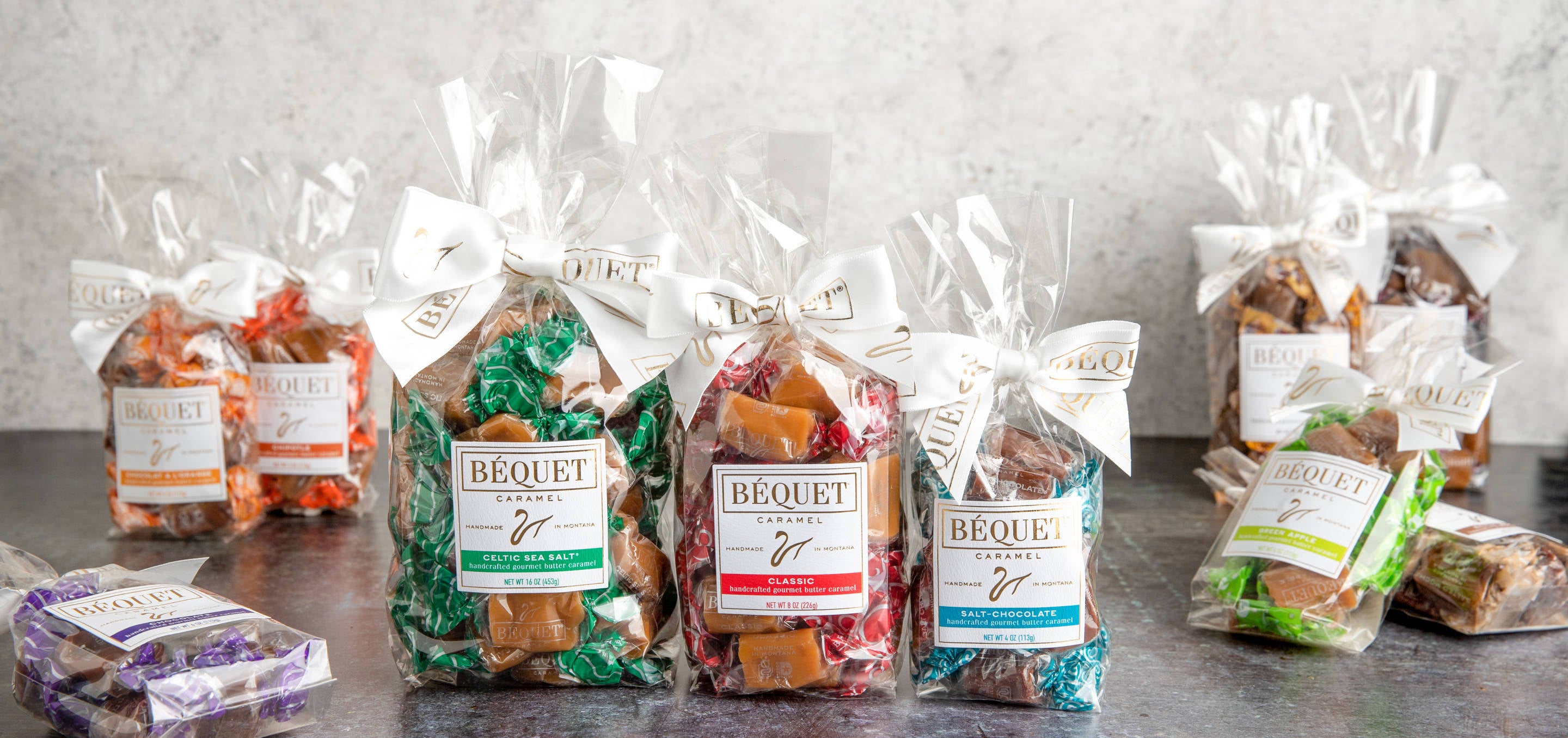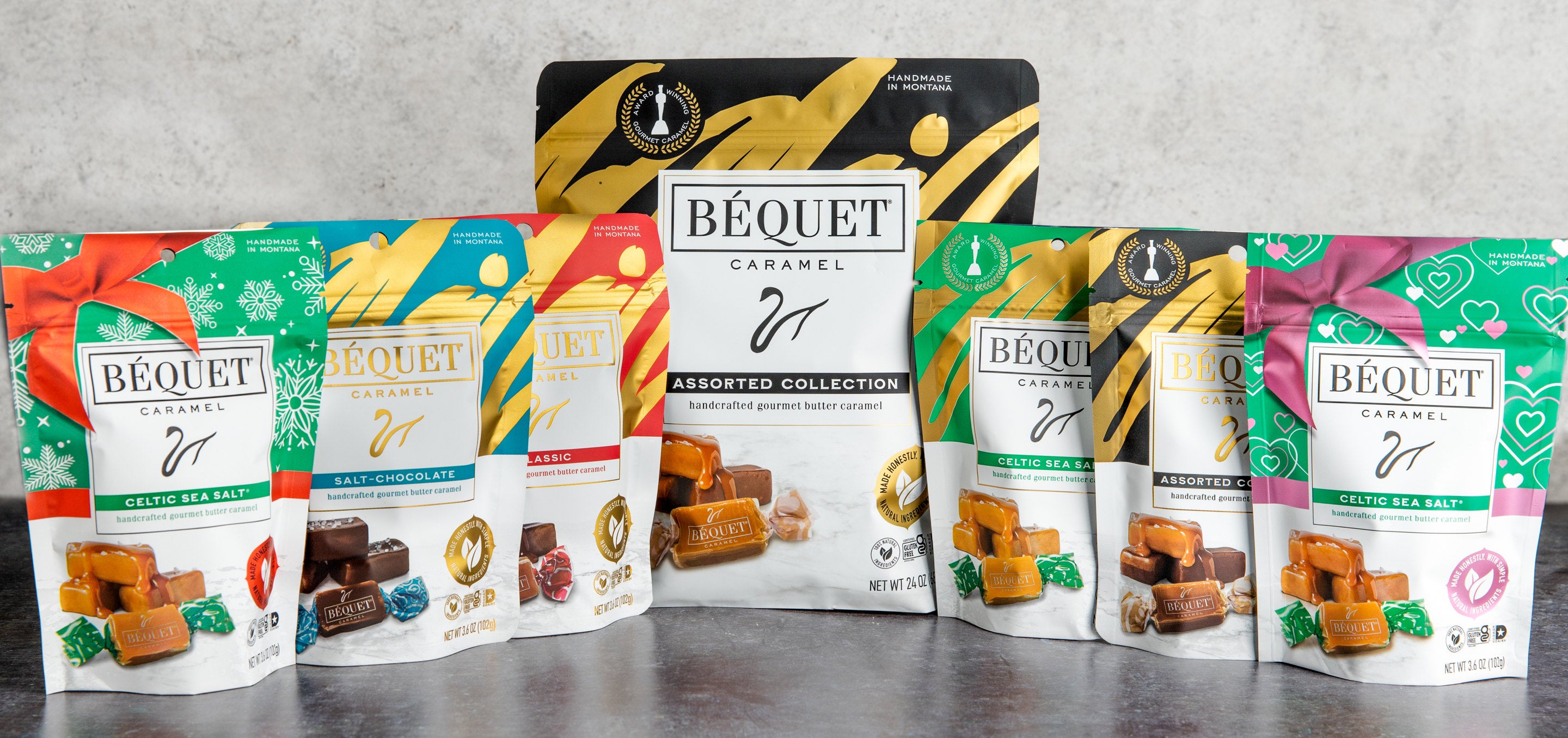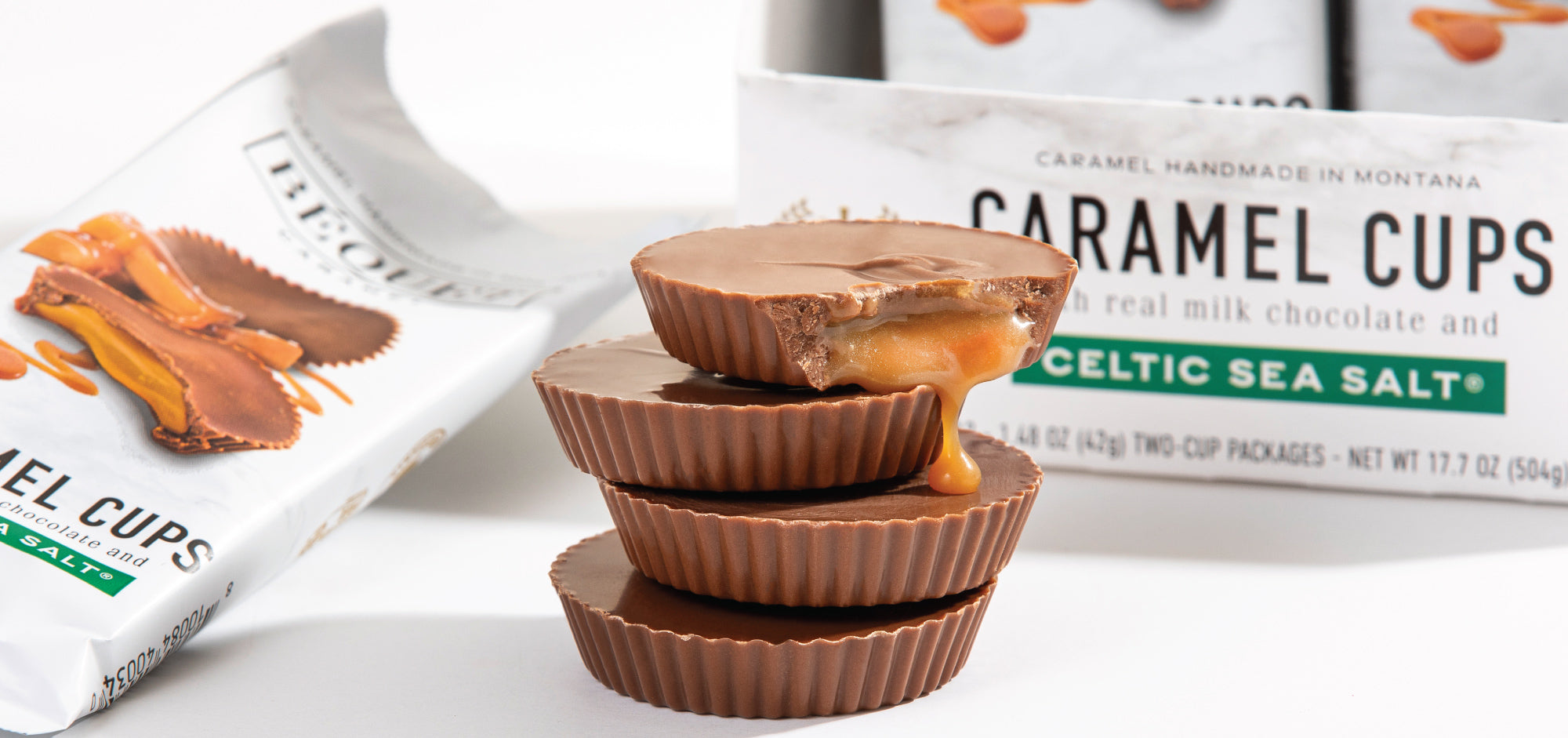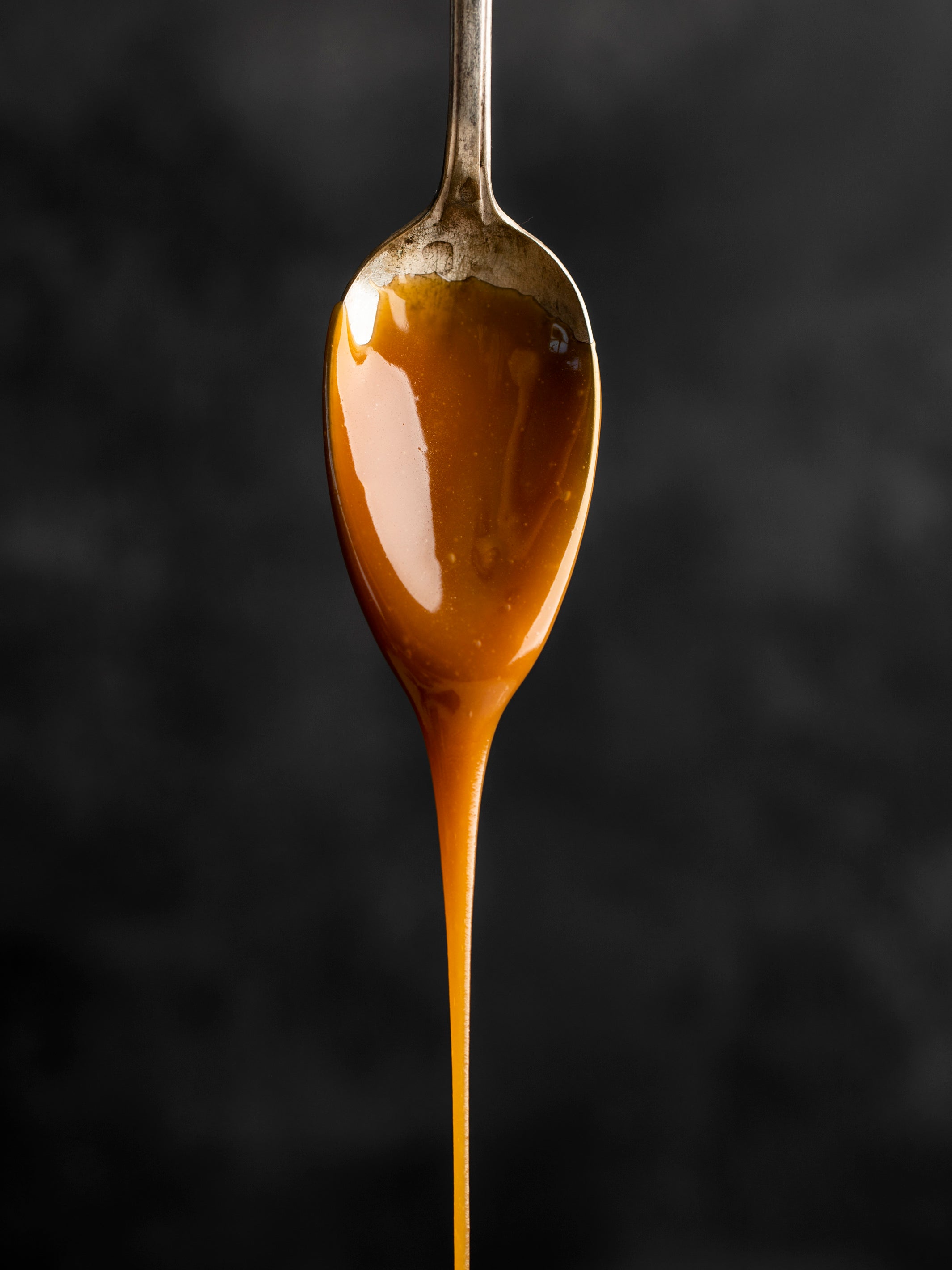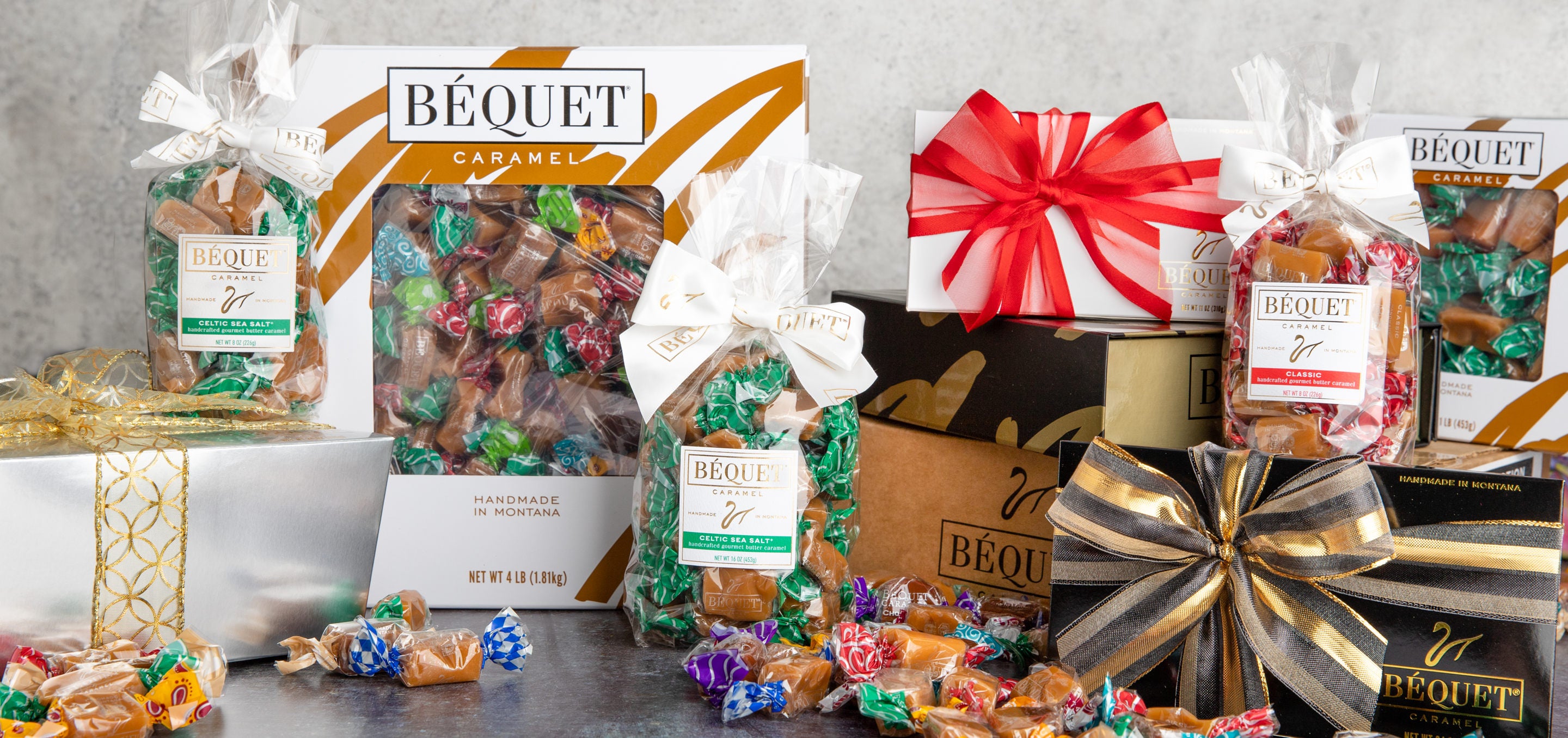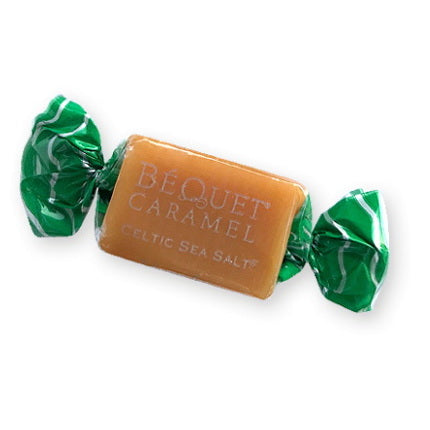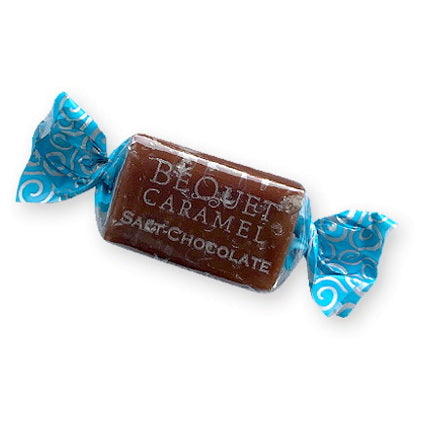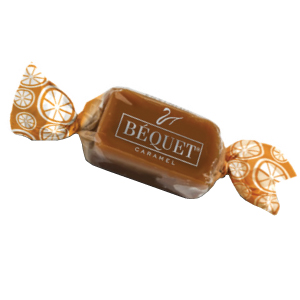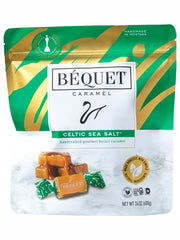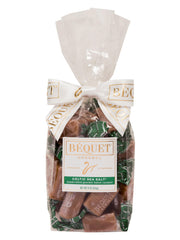Key Takeaways:
- Mastering Ingredient Timing & Selection: Understanding the artistry of caramel involves mastering the science and timing behind ingredient selection and preparation.
- Fixing Caramel Mistakes With Confidence: With proper techniques and tools, troubleshooting common caramel mishaps can turn hiccups into sweet successes.
- Turning Quality Into Celebration-Worthy Caramel: Quality ingredients and meticulous crafting elevate caramel from a simple treat to an indulgence worthy of celebration and gifting.
At Béquet, we’ve earned national awards by keeping our standards tight. Every caramel batch in Montana uses traditional techniques and trusted ingredients: tapioca syrup, antibiotic-free dairy, and pure brown sugar.
Good caramel is about process. Each step, from sugar choice to temperature control, changes how the final product tastes and feels. Whether you're curious about making your own or want to know what sets quality pieces apart from store-bought candy, understanding caramel-making basics gives you a new appreciation for the craft. One small adjustment can shift the whole batch.
This blog will explore how caramel is made from start to finish, breaking down each step from ingredient prep to final texture, while highlighting what separates gourmet batches from mass-produced varieties.
Guide 101: How To Make Caramel
Caramel’s iconic golden hue and silken texture begin with just a handful of simple ingredients, yet the alchemy that transforms them is nothing short of captivating. The essential process, revered by pastry chefs and confectioners alike, relies on a precise balance of heat, timing, and quality components.
Step 1: Gather Fresh Ingredients
Classic caramel calls for granulated sugar or brown sugar, high-quality heavy cream, unsalted butter, and pure vanilla extract. An optional pinch of sea salt adds irresistible depth. In this careful craft, ingredient quality can elevate the outcome from good to extraordinary—especially when preparing how to make caramel sauce, where consistency and finish are everything.
Step 2: Melt The Sugar
Set a heavy-bottomed saucepan over medium heat and pour in your sugar. As the crystals begin to dissolve, resist the urge to stir. Let the sugar melt and darken, swirling the pan gently to encourage even caramelization. Watch closely, caramelization can shift from perfect to scorched in the blink of an eye.
Step 3: Add Cream And Butter
Once the sugar is rich amber, whisk in warm cream and butter. The mixture will bubble vigorously; this is your cue that caramel is taking shape. Stir continuously to achieve a seamless, glossy texture. This is a key turning point, especially if you plan to use the mixture for layered desserts.
Step 4: Infuse Flavor
Off the heat, stir in vanilla extract, and, if desired, a measured sprinkle of sea salt. These final flourishes add nuance, rounding out caramel’s legendary buttery, dissolving sweetness.
Step 5: Cool And Enjoy
Pour the finished caramel into a prepared pan or use it warm as a decadent sauce. Let the mixture set for candies until firm, then cut and wrap for gifting or personal indulgence.
When executed with care, this step-by-step ritual yields a confection worthy of celebration: smooth, luscious caramel with a depth of flavor as memorable as it is distinctive.
Troubleshooting Common Caramel Mishaps
Making caramel is a labor of precision, care, and just the right blend of science and artistry. Even the most seasoned confectioners encounter hiccups.
Here’s how to conquer the most common caramel challenges with confidence:
Grainy Texture
Sugar crystals re-forming during cooking turn your luscious treat into a gritty misadventure. Solve this by using a damp pastry brush to wash down the sides of the pan as your sugar melts. This prevents rogue crystals from tumbling back into your syrup. Also, avoid stirring once the sugar has dissolved; let the bubbling potion work its magic undisturbed, especially in the early caramel making steps where texture is shaped.
Burnt Caramel
Caramel can leap from golden to scorched in seconds. Temperature control is paramount: use a reliable candy thermometer for accuracy. Aim for a deep amber color, but pull the pan from the heat just before you reach your target temperature, as residual heat continues cooking. Don’t walk away during the final moments; your attention is the secret ingredient.
Sticky Or Rock-Hard Caramels
If your confections stick to your teeth or, conversely, could shatter a glass slipper, you’ve likely missed your temperature mark. The sweet spot for soft, silken caramels is generally between 245°F and 250°F. Too low, and you’ll have a chewy mess; too high, and your batch turns brittle. Invest in a quality thermometer, and calibrate it regularly for consistent results in every batch of gourmet caramels.
Crystallized Sugar In Saucepans
If you see clumps or a cloudy syrup, your sugar has crystallized mid-cook. Sometimes, adding a tapioca syrup or a few drops of lemon juice at the start will help prevent this by interfering with crystal formation. With patience and vigilance, each batch progresses closer to flawless.
Each challenge invites you to perfect your technique and savor the delicious rewards. With attentive eyes, steady hands, and a spirit for experimentation, delectable caramel is always within reach.
Scaling The Recipe For Parties Or Favors
Caramel carries a festive spirit, making it a favorite for sophisticated gatherings and memorable gifts. Success requires a refined process to preserve texture and flavor integrity at scale when preparing a larger batch for events or favors.
Measuring Ingredients With Precision
Begin by using a digital scale to ensure accurate measurements. Caramel’s signature consistency relies on precise sugar, cream, and butter ratios. Even slight miscalculations can disrupt the final product, so careful weighing is essential, especially when preparing bulk caramel for crowd-ready servings.
Choosing The Right Cookware For Larger Volumes
A heavy-bottomed, wide saucepan allows even heat distribution across the surface. This reduces the risk of burning or uneven cooking, a common challenge when increasing batch size in the caramel cooking process.
Monitoring Heat With The Right Tools
A candy thermometer is non-negotiable when scaling caramel. Heat buildup behaves differently in larger quantities, and careful temperature control helps prevent graininess or separation while maintaining the silky smoothness Béquet caramels are known for.
Pouring And Cooling With Efficiency
Have parchment-lined trays or molds ready before cooking. When it’s time to pour, you’ll need to move quickly and smoothly to avoid inconsistencies in texture. Prepped surfaces help you maintain quality from pot to portion.
Cutting And Wrapping For Presentation
Once set but still pliable, score and cut the caramel into uniform pieces. Wrap each piece in wax paper to preserve freshness and ensure a clean, polished presentation, ideal for gift bags, dessert tables, or branded favors.
Maintaining Quality Across Every Piece
Scaling doesn’t mean compromising. Each piece should reflect the same care and craftsmanship as a small batch. With the right tools and steps, your caramel will deliver that same luxurious mouthfeel, no matter the quantity.
Nutritional Facts And Allergen Notes
Gourmet caramel invites curiosity about what’s inside each golden, buttery piece.
- What Makes Up A Caramel: Traditional caramel includes just a few core ingredients: sugar, butter, cream, and natural flavorings. These are slowly cooked together to create that smooth, rich texture caramel is known for, no fillers or excess processing needed.
- Calories Per Piece: A standard individually wrapped caramel contains around 50–60 calories. These are treats meant to be savored in moderation, as a small indulgence that fits into a balanced lifestyle.
- Fat & Sugar Breakdown: Each caramel usually delivers two to three grams of fat and four to six grams of sugar. These numbers can vary slightly depending on whether the recipe includes additions like chocolate or salted toppings.
- How Sodium Levels Vary: Sodium in classic caramel is often low, but salted or specialty versions naturally contain more. The presence of sea salt adds to flavor complexity while still keeping sodium within a reasonable range for a treat.
- Dairy Is Always Present: Caramel recipes rely on cream and butter as core ingredients. This makes them unsuitable for those with lactose intolerance or dairy allergies, even in artisan or cleaner-label variations.
- Cross-Contamination Considerations: Products that include nuts, chocolate coatings, or shared kitchen space should be reviewed carefully. Though many artisanal producers avoid artificial additives, trace allergen contact risks still exist without strict protocols.
- Why Label Transparency Matters: Reading ingredient lists and allergen disclosures is essential, especially for consumers with celiac disease or food allergies. Trustworthy brands will always be clear about what’s included, and just as importantly, what isn’t.
- Gourmet Standards For Ingredient Integrity: Higher-end caramel makers, like Béquet®, avoid unnecessary preservatives and stabilizers. Clean, recognizable ingredients are a hallmark of gourmet production, supporting a better taste and a safer experience for sensitive eaters.
Creative Ways To Enjoy Homemade Caramel
Homemade caramel possesses an irresistible creamy elegance, and its versatility can elevate even the simplest treat into something truly extraordinary.
Elevate Fresh Fruit With A Caramel Drizzle
Drizzle warm homemade caramel over slices of crisp apples or roasted pears. The fruit's natural juiciness balances the caramel’s rich, buttery notes, making it an effortless yet indulgent pairing that feels both rustic and refined.
Add Depth To Baked Goods Like Brownies And Blondies
Fold freshly made caramel directly into brownie or blondie batter before baking. This method creates hidden pockets of smooth sweetness, offering contrast to the chewiness of the base and adding a gourmet twist to a familiar favorite.
Create A Sweet And Savory Popcorn Snack
Pour a thin stream of caramel over freshly popped popcorn and finish with a sprinkle of flaky sea salt. This combo delivers a satisfying sweet-savory crunch—ideal for gifting, snacking, or upgrading movie night.
Upgrade Breakfast With A Caramel Swirl
Add a swirl of caramel to oatmeal, pancakes, or French toast for a rich start to the day. The combination of warm grains and buttery caramel transforms a regular morning into something worth slowing down.
Use Caramel As A Finishing Touch On Desserts
Apply a glossy layer of caramel to panna cotta or cheesecake to bring smooth, complex sweetness and visual appeal. Each spoonful becomes a blend of creamy texture and warm, caramelized flavor.
Experiment With Homemade Gourmet Treats
Fill chocolates, blend into milkshakes, or layer into trifles for a custom dessert experience. Caramel’s flexibility makes it an excellent ingredient for anyone exploring more creative or luxurious dessert presentations.
Final Thoughts
Mastering caramel takes patience, attention to detail, and a deep respect for quality ingredients, values we live by at Béquet®. Every step matters from the first sugar bubbling to the final smooth pour. The magic of caramel is in how the texture and flavor come together.
At Béquet®, we’ve spent years perfecting our small-batch process. That dedication has earned us 12 national awards, and even more importantly, the trust of caramel lovers nationwide. Each piece, including our delectable caramel cups, is carefully crafted and wrapped by our team in Bozeman, Montana, delivering a moment of joy whether you’re gifting it or keeping it for yourself.
We don’t believe in shortcuts. Our caramels result from science, craft, and care working together. When you choose Béquet®, you’re tasting the difference that comes from doing things the right way; every single time.
Frequently Asked Questions About How Caramel Is Made
What is caramel?
Caramel is a luxurious confection created by heating sugar until it liquefies and transforms into a golden, aromatic syrup. This process enhances the sugar’s natural sweetness while bringing out complex notes of toffee and butter. Understanding what caramel is helps appreciate how technique and ingredient quality define its taste and texture. At Béquet®, we use carefully sourced ingredients to prepare caramels with an unparalleled silky texture and depth of flavor that capture the essence of gourmet craftsmanship.
What ingredients are needed to make caramel?
Classic caramel begins with simple, high-quality ingredients: sugar, heavy cream, butter, and a touch of salt or vanilla. The key to exceptional caramel lies in the quality of each element, so we choose only the freshest cream and the purest butter to achieve our award-winning balance of richness and smoothness.
What type of sugar is best for caramel?
We recommend using pure brown sugar. Its clean, sweet flavor and consistent melting properties provide a reliable foundation for caramelization. While other sugars and sweeteners can be used for specific effects or flavor notes, brown sugar provides the most refined caramel taste and texture.
How much water should I use for caramel?
If you’re following the wet method, you’ll need just enough water to moisten the sugar, usually about a quarter cup of water per cup. This allows the sugar to dissolve and melt gently without scorching, ensuring a smooth base for your caramel.
What is the wet method for making caramel?
The wet method involves dissolving sugar in water before applying heat. This gentle approach helps the sugar melt evenly, reducing the risk of burning and allowing for greater control as the syrup darkens to the perfect amber shade.
What is the dry method for making caramel?
The dry method skips the water entirely, heating sugar directly in the pan until it melts and caramelizes. This method creates deeply toasted, robust caramel notes and develops more quickly—but it demands close attention, as the sugar can burn or crystallize if left unattended.
How do I prevent caramel from crystallizing?
There are a few tricks. Use a clean, heavy-bottomed pan and avoid stirring the sugar once it melts. Occasionally, brushing down the sides of the pan with a wet pastry brush washes away stray sugar crystals. Adding a small amount of tapioca syrup or lemon juice also helps disrupt crystal formation, yielding silky-smooth caramel like ours at Béquet®.
How is caramel made from sugar?
Caramel is made by carefully heating sugar until it melts, then cooking it further so it changes color and flavor, developing aromatic, toasty notes. For classic caramels, cream and butter are stirred once the sugar reaches the ideal amber hue, transforming the molten syrup into a luscious, creamy confection. At Béquet®, this process is performed with absolute precision, resulting in caramels renowned for their smoothness and balanced flavor, worthy of every accolade.
